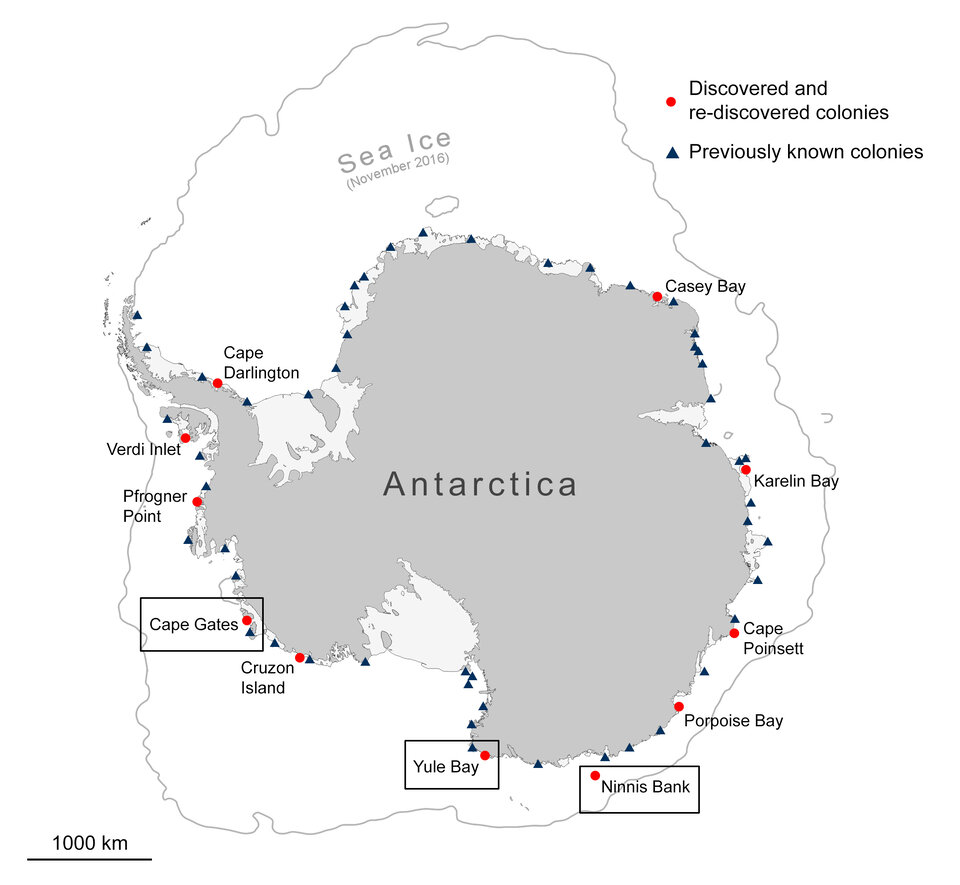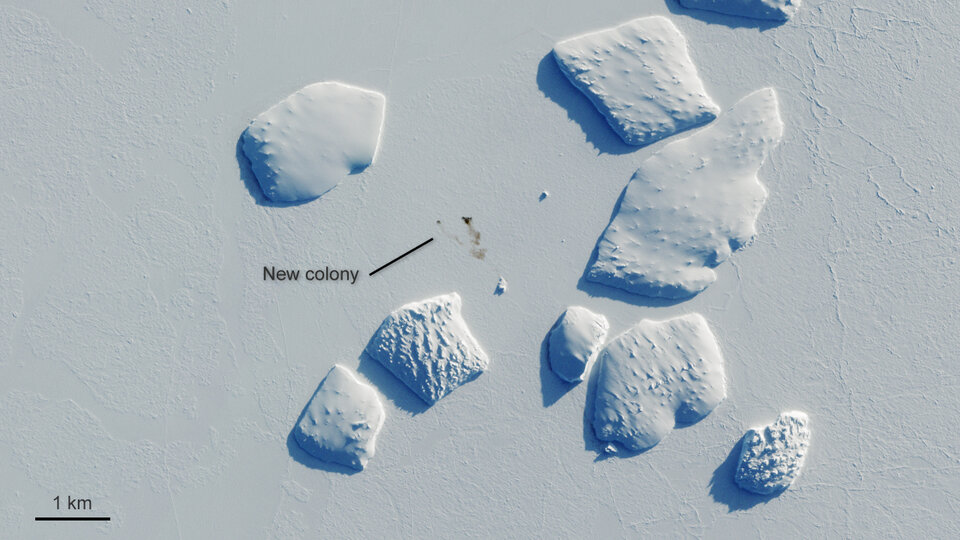6.08.2020

Satellite images have revealed that there are nearly 20% more emperor penguin colonies in Antarctica than previously thought. Scientists, at the British Antarctic Survey, have used satellite data from the Copernicus Sentinel-2 mission to track penguin guano, or penguin poo, to monitor the presence of thousands of penguins.
The findings, published today in Remote Sensing in Ecology and Conservation, reveal 11 new colonies, three of which were previously identified but never confirmed. This discovery takes the global census to 61 colonies around the entire continent.

Emperor penguins live in Antarctica, which is not only remote and inaccessible, but temperatures can drop to –50°C. Studying penguin colonies is therefore extremely difficult. Nevertheless, over the last 10 years, scientists at the British Antarctic Survey (BAS) have been able to search for new emperor penguin colonies using satellite imagery.
Although penguins are too small to show up in satellite images, giant stains on the ice from penguin droppings – known as guano – are easy to identify at the 10 m pixel resolution that the Copernicus Sentinel-2 mission offers.
These brownish patches have allowed scientists to locate and track penguin populations across the entire continent.

Peter Fretwell, lead author and geographer at BAS, comments, “This is an exciting discovery. The new satellite images of the Antarctica coastline have enabled us to find these new colonies. And whilst this is good news, the colonies are small and so only take the overall population count up by 5–10%, to just over half a million penguins or around 265 500 – 278 500 breeding pairs.”
The results, thanks to satellite images from Copernicus Sentinel-2, are an important milestone for monitoring the impact of environmental change on the population of emperor penguins.

The flightless birds are known to be particularly vulnerable to climate change, as warming ocean waters are melting the sea ice where they live and breed. Following the current projections of climate change, their habitat is likely to decline. The results from the study show that the majority of the newly found colonies are at the margins of the emperors’ breeding range – locations that could be lost as the climate continues to warm.
Philip Trathan, Head of Conservation Biology at BAS, has been studying penguins for the last three decades. He says, “Whilst it is good news that we’ve found these new colonies, the breeding sites are all in locations where recent model projections suggest emperors will decline. Birds in these sites are therefore probably the ‘canaries in the coalmine’ – we need to watch these sites carefully as climate change will affect this region.”

The study found a number of colonies 180 km offshore, situated on sea ice that has formed around icebergs that had grounded in shallow water. These colonies are a surprising new finding in the behaviour of this increasingly well-known species.
Copernicus Sentinel-2 is a two-satellite mission designed specifically to deliver the wealth of data and imagery that are central to the European Commission’s Copernicus programme. Satellites, such as the Sentinel-2 mission, provide us with a global coverage, revisiting the same region every few days. The data provide a good understanding of the health and behaviour of our planet – and how it is continuously affected by climate change.
Quelle: ESA
